Audi 2012 Annual Report Download - page 185
Download and view the complete annual report
Please find page 185 of the 2012 Audi annual report below. You can navigate through the pages in the report by either clicking on the pages listed below, or by using the keyword search tool below to find specific information within the annual report.-
 1
1 -
 2
2 -
 3
3 -
 4
4 -
 5
5 -
 6
6 -
 7
7 -
 8
8 -
 9
9 -
 10
10 -
 11
11 -
 12
12 -
 13
13 -
 14
14 -
 15
15 -
 16
16 -
 17
17 -
 18
18 -
 19
19 -
 20
20 -
 21
21 -
 22
22 -
 23
23 -
 24
24 -
 25
25 -
 26
26 -
 27
27 -
 28
28 -
 29
29 -
 30
30 -
 31
31 -
 32
32 -
 33
33 -
 34
34 -
 35
35 -
 36
36 -
 37
37 -
 38
38 -
 39
39 -
 40
40 -
 41
41 -
 42
42 -
 43
43 -
 44
44 -
 45
45 -
 46
46 -
 47
47 -
 48
48 -
 49
49 -
 50
50 -
 51
51 -
 52
52 -
 53
53 -
 54
54 -
 55
55 -
 56
56 -
 57
57 -
 58
58 -
 59
59 -
 60
60 -
 61
61 -
 62
62 -
 63
63 -
 64
64 -
 65
65 -
 66
66 -
 67
67 -
 68
68 -
 69
69 -
 70
70 -
 71
71 -
 72
72 -
 73
73 -
 74
74 -
 75
75 -
 76
76 -
 77
77 -
 78
78 -
 79
79 -
 80
80 -
 81
81 -
 82
82 -
 83
83 -
 84
84 -
 85
85 -
 86
86 -
 87
87 -
 88
88 -
 89
89 -
 90
90 -
 91
91 -
 92
92 -
 93
93 -
 94
94 -
 95
95 -
 96
96 -
 97
97 -
 98
98 -
 99
99 -
 100
100 -
 101
101 -
 102
102 -
 103
103 -
 104
104 -
 105
105 -
 106
106 -
 107
107 -
 108
108 -
 109
109 -
 110
110 -
 111
111 -
 112
112 -
 113
113 -
 114
114 -
 115
115 -
 116
116 -
 117
117 -
 118
118 -
 119
119 -
 120
120 -
 121
121 -
 122
122 -
 123
123 -
 124
124 -
 125
125 -
 126
126 -
 127
127 -
 128
128 -
 129
129 -
 130
130 -
 131
131 -
 132
132 -
 133
133 -
 134
134 -
 135
135 -
 136
136 -
 137
137 -
 138
138 -
 139
139 -
 140
140 -
 141
141 -
 142
142 -
 143
143 -
 144
144 -
 145
145 -
 146
146 -
 147
147 -
 148
148 -
 149
149 -
 150
150 -
 151
151 -
 152
152 -
 153
153 -
 154
154 -
 155
155 -
 156
156 -
 157
157 -
 158
158 -
 159
159 -
 160
160 -
 161
161 -
 162
162 -
 163
163 -
 164
164 -
 165
165 -
 166
166 -
 167
167 -
 168
168 -
 169
169 -
 170
170 -
 171
171 -
 172
172 -
 173
173 -
 174
174 -
 175
175 -
 176
176 -
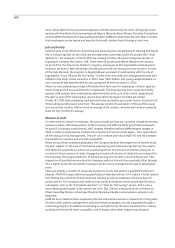 177
177 -
 178
178 -
 179
179 -
 180
180 -
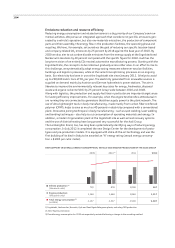 181
181 -
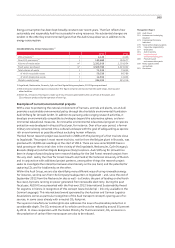 182
182 -
 183
183 -
 184
184 -
 185
185 -
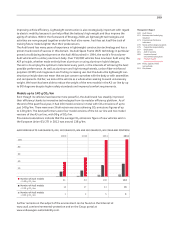 186
186 -
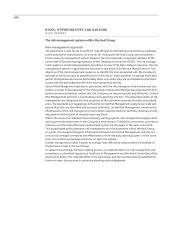 187
187 -
 188
188 -
 189
189 -
 190
190 -
 191
191 -
 192
192 -
 193
193 -
 194
194 -
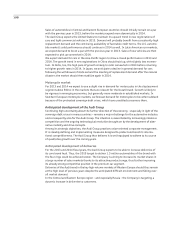 195
195 -
 196
196 -
 197
197 -
 198
198 -
 199
199 -
 200
200 -
 201
201 -
 202
202 -
 203
203 -
 204
204 -
 205
205 -
 206
206 -
 207
207 -
 208
208 -
 209
209 -
 210
210 -
 211
211 -
 212
212 -
 213
213 -
 214
214 -
 215
215 -
 216
216 -
 217
217 -
 218
218 -
 219
219 -
 220
220 -
 221
221 -
 222
222 -
 223
223 -
 224
224 -
 225
225 -
 226
226 -
 227
227 -
 228
228 -
 229
229 -
 230
230 -
 231
231 -
 232
232 -
 233
233 -
 234
234 -
 235
235 -
 236
236 -
 237
237 -
 238
238 -
 239
239 -
 240
240 -
 241
241 -
 242
242 -
 243
243 -
 244
244 -
 245
245 -
 246
246 -
 247
247 -
 248
248 -
 249
249 -
 250
250 -
 251
251 -
 252
252 -
 253
253 -
 254
254 -
 255
255 -
 256
256 -
 257
257 -
 258
258 -
 259
259 -
 260
260 -
 261
261 -
 262
262 -
 263
263 -
 264
264 -
 265
265 -
 266
266 -
 267
267 -
 268
268 -
 269
269 -
 270
270 -
 271
271 -
 272
272 -
 273
273 -
 274
274 -
 275
275 -
 276
276 -
 277
277 -
 278
278 -
 279
279 -
 280
280 -
 281
281 -
 282
282 -
 283
283 -
 284
284 -
 285
285
 |
 |

188
Modular efficiency platform
Audi’s modular efficiency platform brings together all technologies that contribute towards a
further reduction in CO2 emissions and fuel consumption. It comprises various components from
a large number of technology areas, such as engines, auxiliaries, transmissions, energy manage-
ment, body manufacturing and driver assistance systems.
Along with forthcoming model changeovers and product improvements, the range of innovative
technologies from the modular efficiency platform will steadily be broadened and gradually be
introduced for all car lines of the Audi brand. For example, most models of the Audi brand are
now already fitted with a start-stop system as standard. When the Audi Q5 was revised in the
past fiscal year, the fuel efficiency of the TFSI and TDI engines was improved by up to 15 percent
on average despite their increased performance and higher torque. The range of TDI engines for
the Audi Q5 culminates in the comprehensively modified 3.0 TDI, which has as its particular
features low internal friction, a demand-controlled oil pump and advanced thermal management.
The crankcase and cylinder heads have separate coolant circuits connected by valves.
On the new A3 Sportback, the technologies from the modular efficiency platform have helped cut
consumption by nine percent on average compared with the predecessor model.
THE AUDI MODULAR EFFICIENCY PLATFORM
Audi ultra
Over recent years, tougher safety requirements and higher comfort and convenience expectations
in particular have driven up vehicle weights. However, 100 kilograms less weight can trim a
vehicle’s fuel consumption by around 0.3 liters per 100 kilometers. The principle of lightweight
construction, and therefore the reversal of the weight spiral, are consequently fundamental to
Assistance systems
►Economical route guidance
►Dynamic congestion avoidance
►Gear-change indicator
►Audi adaptive cruise control
with stop&go function
►LED daytime running lights
►Driver information system
with efficiency program
►Audi drive select with
“efficiency” mode
Ancillaries
►Electromechanical steering
►Improved hydraulic steering
►On-demand control of ancillaries
Audi ultra lightweight construction
►Audi Space Frame (ASF)
►Innovative combinations of materials
Driving and rolling resistance
►Aerodynamic measures
►Tires with optimized rolling
resistance
Energy management
►Highly efficient
air conditioning
►Energy recovery
►Start-stop system
►Innovative thermal
management
Transmission
►6-speed and 7-speed S tronic dual-clutch
transmission
►8-speed tiptronic
►multitronic
►Freewheeling function
Engines
►TDI
►TDI clean diesel
►Common rail technology
►FSI
►TFSI
►Audi valvelift system
►Hybrid technology
►Cylinder on demand
